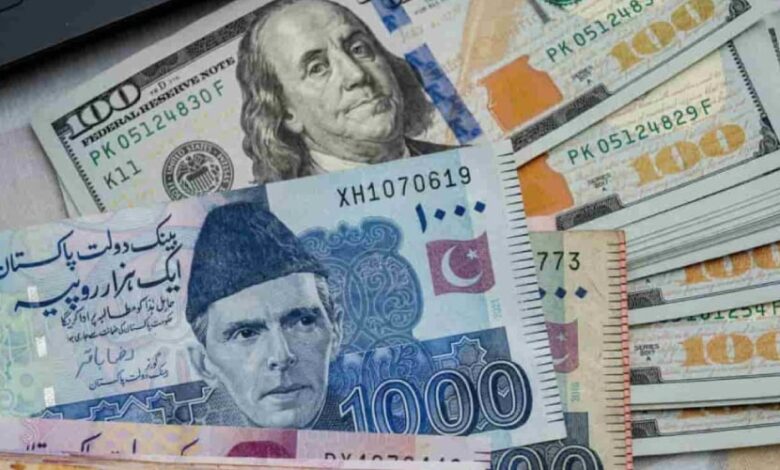As the dollar depreciates in the open market and interbank markets, the rupee rises.

According to market analysts on Thursday, a continued crackdown on illicit currency trading and a decline in dollar demand contributed to the Pakistani rupee’s small recovery against the US dollar this week.
Both in the open and interbank markets, the greenback, which had been steadily rising in recent weeks, lost momentum. Over the course of two days, the dollar fell 72 paisa in the interbank market, from Rs284.97 to Rs284.25.
The dollar fell more precipitously on the open market, falling Rs1.30 to trade at Rs287.30 from Rs288.60.
Increased enforcement measures against the Hawala and Hundi networks, a parallel remittance system that circumvents legitimate banking systems, were blamed by currency dealers for the dollar rate reversal.
Exchange Companies Association of Pakistan (ECAP) Chairman Malik Bostan told SAMAA TV that the rupee’s rebound is anticipated to continue. “The continuous campaign against illicit money changers is paying off,” he declared.
In order to relieve pressure on the rupee, the State Bank has also stopped buying dollars from the interbank market. There are plenty of bucks. Instead than hoarding things, people ought to sell them.
Bostan, who recently discussed the currency issue with a senior official in Islamabad on July 22, advised the public to have faith in the stability of the market and refrain from speculative purchasing. He made a suggestion that if present patterns continue, the rupee might gain more value.
In the meantime, dealers claimed that post-Eid remittance inflows have stayed consistent, improving dollar liquidity. A Karachi-based currency dealer stated, “Since the crackdown, we’ve seen more customers willing to sell their dollars, which is creating a balance in the market.”
The Pakistan Stock Exchange also demonstrated resiliency in the equity market. On the fourth day of the trading week, the benchmark KSE-100 Index was trading above 139,800 points, indicating investor confidence in administrative and economic changes.